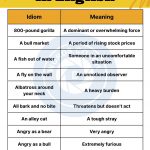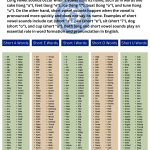Spelling Plurals With -s or -es
Most nouns in English are made plural by simply adding an -s to the end. However, there are a few rules that you need to know for spelling plurals with -s or -es.
Rule 1: Add -s to nouns that end in a vowel or a consonant
- Examples:
- cat → cats
- dog → dogs
- house → houses
- book → books
- table → tables
Rule 2: Add -es to nouns that end in -s, -sh, -ch, -x, or -z
- Examples:
- bus → buses
- dish → dishes
- church → churches
- fox → foxes
- buzz → buzzes
Rule 3: Double the consonant + -es to nouns that end in a consonant preceded by a single vowel
- Examples:
- baby → babies
- fly → flies
- city → cities
- tomato → tomatoes
Rule 4: Add -es to nouns that end in -f or -fe, unless the f or fe is preceded by a vowel
- Examples:
- thief → thieves
- wife → wives
- leaf → leaves
- calf → calves
Irregular Plurals
There are a few irregular plurals in English that you need to memorize. These nouns do not follow the rules above.
- Examples:
- man → men
- woman → women
- child → children
- foot → feet
- tooth → teeth
Tips for Spelling Plurals
Here are a few tips for spelling plurals correctly:
- Say the word aloud. If the word ends in a hissing sound, add -es. If the word ends in a consonant sound, add -s.
- Look for a pattern. If you see a noun that ends in -s, -sh, -ch, -x, or -z, add -es.
- If you are unsure, check a dictionary.
Spelling plurals with -s or -es can be tricky, but it is important to learn the rules. By following the rules and tips above, you can improve your spelling skills and avoid making common mistakes.





